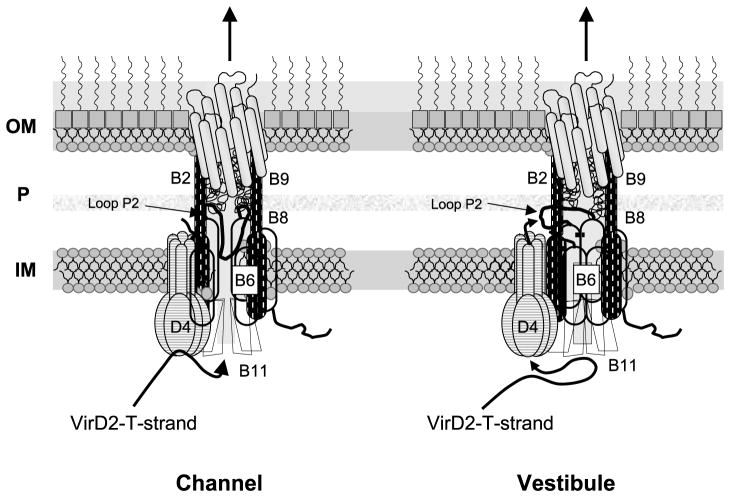Figure 7.
Models for VirB6 function in mediating DNA transfer through the VirB/D4 T4SS. In the “channel” model, the VirD4 T4CP recruits the DNA substrate and delivers it to the VirB11 ATPase. VirB11 directs substrate transfer through an inner membrane channel composed of the five TMS of VirB6 (shaded) and the TMS of bitopic VirB8 (vertical dashes). Periplasmic loop P2 of VirB6 folds into the channel, possibly dynamically to facilitate DNA passage. In the “vestibule” model, VirD4 recruits and delivers substrate to the VirB11 chaperone for unfolding the VirD2 relaxase bound to the 5′ end of the T-strand. VirB11 delivers the translocation-competent substrate back to VirD4 for delivery across the membrane. At the periplasm-membrane interface, loop P2 of VirB6 forms a vestibule through which the substrate passes to gain entry into the secretion channel. In both models, VirB6 coordinates further progression through the periplasm via a channel composed of VirB8, VirB2 and VirB9. The models show only the six channel subunits identified by TrIP to form close contacts with the DNA substrate.16

